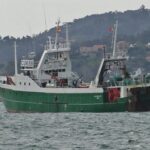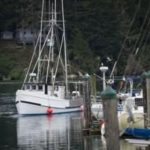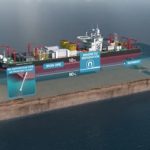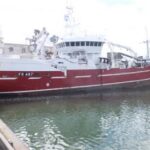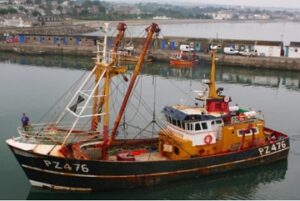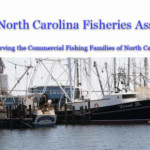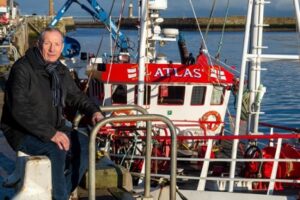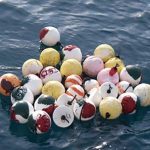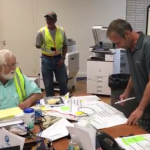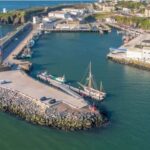Monthly Archives: February 2020
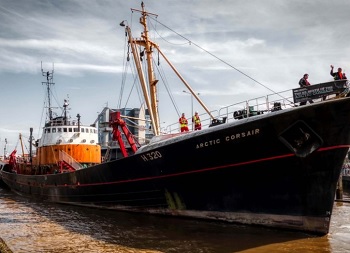
On This Day: The Arctic Corsair was launched 60 years today
Today marks the 60th birthday of one of Hull’s most high-profile pieces of maritime heritage. On Monday, February 29, 1960 the newly-built Arctic Corsair trawler was launched sidewards into the River Hull at the Beverley shipyard of Coo, Welton and Gemmell Ltd. The sidewinder trawler was the latest addition to a fleet of vessels owned by Hull fishing firm Boyd Line. Like all new trawlers, the Corsair wasn’t immediately ready for a trip to the Arctic fishing grounds. Instead, she underwent an extensive fitting out operation in Princes Dock in Hull before embarking on her maiden voyage on June 18. Video, >click to read< 14:52
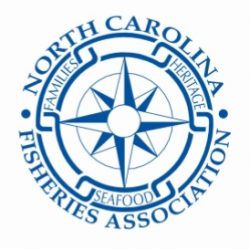
North Carolina Fisheries Association Weekly Update for February 21, 2020 February 28, 2020
Legislative updates, Bill updates, Calendar, >Click here to read the Weekly Update<, to read all the updates >click here<, for older updates listed as NCFA >click here< 12:30
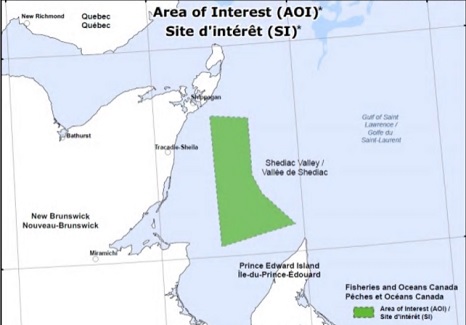
P.E.I. Fishermen’s Association want answers about new whale restrictions
Among the new rules, Transport Canada has identified a sensitive area off western P.E.I. that it’s calling the Shediac Valley. Boats won’t be allowed in unless absolutely necessary, but exact boundaries have not yet been set. “The coordinates won’t actually be set until after the whales arrive,” said Melanie Giffin, marine biologist for the association. “So we don’t actually know the location of that box until the whales are here and aggregating. So there’s still some confusion around that.” >click to read< 11:48
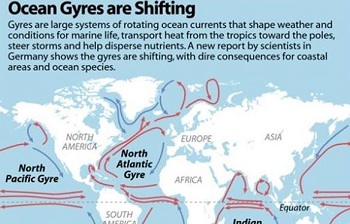
New study shows ocean currents are shifting toward the poles
In the past 40 years, eight of the world’s major ocean gyres (wind-driven current systems) have been slowly shifting toward the poles at a rate of about a mile every two years. Up to now, available observations have been sparse and short in duration, making it difficult to track any dynamic changes of large‐scale ocean circulation. This is what experts at the Alfred Wegener Institute, Helmholtz Centre for Polar and Marine Research (AWI), analyzing long-term global satellite data of ocean surface temperature and sea levels found. >click to read<10:49

Gov.Roy Cooper secures $7.7 million in fed fisheries disaster relief, a portion of $65 million appropriation by Congress
Governor Roy Cooper has secured $7.7 million in federal fisheries disaster assistance for North Carolina. The funds are part of a $65 million appropriation by Congress for fishery disasters nationwide in 2019. Hurricane Florence blew into coastal North Carolina in September 2018, dropping nearly three feet of rain over a four-day period and causing widespread flooding that disrupted fishing and destroyed boats, gear, and buildings critical to fishing businesses.>click to read<10:09
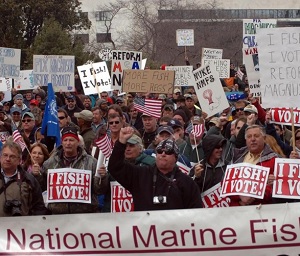
United We Fish -10 years ago fishermen marched on D.C.
Ten years ago, more than 35 local fishermen boarded a charter bus at Capt. Anderson’s Marina on Panama City Beach for a marathon ride to Washington D.C. for the United We Fish march on the Capitol.,,, By the busloads, fishermen from New Jersey to the Florida Keys and from Alaska to California came bearing signs, carrying banners and sporting stickers plastered on their shirts for the three-hour march. They pretty much all voiced the same opinion that the Magnuson Stevens Act, which was designed to regulate fish to sustainable levels, was broke. photo’s >click to read< 09:58

The body of a missing commercial fisherman has been recovered from Yaquina Bay
A body found in Yaquina Bay has been identified as that of a fisherman who has been missing for nearly three weeks, the Newport Police Department said Thursday. Norman Grant was reported missing on Feb. 9 and hadn’t been seen since the evening of Feb. 8, Chief Jason Malloy said in a statement. Cell phone records and video from local surveillance cameras put Grant’s last known location near a fishing boat that he worked on called the F/V Prolifik. The boat was moored at Hallmark Fisheries. >click to read< 09:18
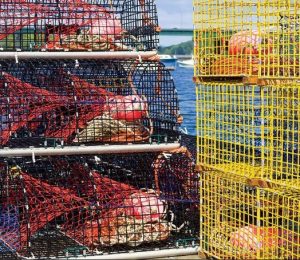
Consider the Lobster Trap. How a father-and-son manufacturing company clawed its way to the top
Riverdale Mills, a Massachusetts manufacturer that commands 85% of the U.S. market in its niche—lobster traps—has a dynamism and rich history that make it a good subject for this exercise. Riverdale Mills faces similar hurdles as corporations many times their size—tariffs, a soft market, a strong dollar, etc. (Plus, they have their own idiosyncratic hurdles, like when the lobster industry is on forced hiatus during right whale migration.),, James Knott Sr., was a polymath. His mind never rested, not even when he was fishing. A decorated Army veteran and a Harvard College grad, Knott Sr. invented several coatings while running his own manufacturing company, Coatings Engineering Corporation. Knott Sr. sold CEC in 1962, staying on as president and director. Finding himself with more free time, he took up lobster fishing in Gloucester, Massachusetts. >click to read< 07:30

Watermen take to the streets to protest
About 100 members of the Talbot Waterman’s Association lined up in front of the Easton Shore Land Conservancy to protest in the early morning hours of Wednesday, Feb. 26. The group is taking issue with the conservancy’s and Chesapeake Bay Foundation’s lack of effort to work with the watermen in a way that allows them to make a living, they said. The evening before the protest, a group of about 200 watermen gathered in Annapolis to address Senate Bill 948, sponsored by state Sen. Paul G. Pnsky, D-22-Prince George’s, that would reduce unlimited tidal fishery license holders’ ability to harvest oysters. >click to read< 21:23
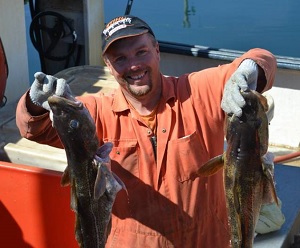
‘On pins and needles’ – NL fish harvesters, processors keeping an eye on China as coronavirus crisis continues
COVID-19, also commonly referred to as the coronavirus, is having a significant economic impact on China, a country whose importance continues to grow as a destination for seafood from this province. “Everybody’s on pins and needles,” Garnish-based harvester Alfred Fitzpatrick told SaltWire Network recently. The crab season along the province’s south coast usually opens up in early April, followed a couple weeks later by lobster. That’s not far off, and with talk in recent days of COVID-19 potentially becoming a pandemic, it looks as if the economic consequences will continue, as well. “Oh, my God, yes,” Fitzpatrick responded when asked if the COVID-19 crisis was inspiring conversation on the province’s wharves. “Like I said, everybody is worried. With the cost of everything going up and the new requirements and everything everybody got to do, I mean, it’s all money, and if you don’t make it, you can’t spend it, hey,” he said. >click to read< 17:40
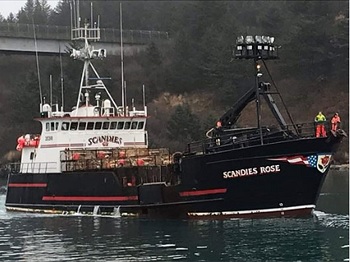
F/V Scandies Rose: U.S. Coast Guard convenes Marine Board of Investigation
The U.S. Coast Guard has convened a Marine Board of Investigation into the loss of F/V Scandies Rose and five of its seven crewmembers. A Marine Board of Investigation is the highest level of investigation in the Coast Guard. Upon completion of the investigation, the Board will issue a report to the commandant with the evidence collected, the facts established and its conclusions and recommendations. >click to read< 14:09
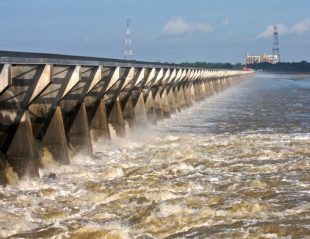
Graves requests $100M in fisheries disaster assistance to La. after record-setting opening of Bonnet Carre Spillway
Congressman Garret Graves has written a letter to the National Oceanic an Atmospheric Administration (NOAA) asking them to allocated the remaining $100 million in fisheries disaster assistance to Louisiana to go towards mitigating the impacts of the recent openings of the Bonnet Carre Spillway.,, “To rub even more salt in the wound, our fishing industry has been taking it on the chin for years, punished by previous, man-made disadvantages, including falsely labeled crawfish from overseas and imported shrimp taking precedent in the market over our domestic and sustainable seafood products,” said Graves. >click to read< 12:50
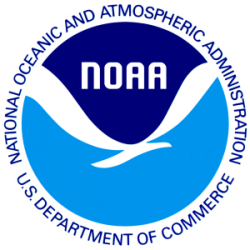
NOAA grants Alaskan Fisheries $24.4 million in disaster relief funding. When, though?!
Thursday the National Oceanic and Atmospheric Administration (NOAA), approved a $24.4 million dollar disaster relief package to help restore the loss of fisheries impacted by the 2018 pacific cod fishery disaster and sockeye salmon failure in Chignik. The money will be administered by the Pacific States Marine Fisheries Commission who will distribute the relief payments to fishermen and their deckhands, processors, and fishery research in the affected regions. >click to read< 10:26

Jessie’s Ilwaco Fish Co. files for receivership
Receivership is similar to bankruptcy, but is handled under state law. The process is often used when a company is unable to meet its financial obligations. Receiver Christopher Wain was appointed on Feb. 26 by Pacific County Superior Court Judge Donald Richter, according to court documents. Jessie’s is owned by Alber Seafoods, Inc., a California company that also filed for receivership on the same day. Wain specializes in keeping companies running during a receivership, he said when reached Feb. 27., Jessie’s owes about $10.5 million in secured and unsecured debts and has assets with a book value of $7.1 million, >click to read< 09:50
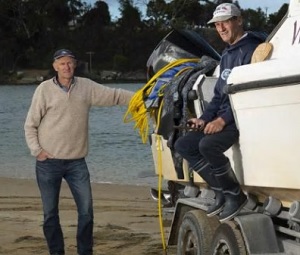
Coronavirus: Seafood industry falls victim to the virus
Abalone fisheries, reliant on China for up to 90 per cent of sales, have been paralysed by the sudden drop in demand with Tasmania’s entire fleet of up to 100 abalone dive boats “ground to a halt” for the past month. Lobster was one of the first sectors to suffer as the result of China’s quarantine lockdowns, forcing the sale of export catches on the local market at discounted prices. The crisis has since broadened, affecting scale fisheries such as banded morwong and wrasse, and all processors reliant on China exports or live fish trade to deserted Chinatowns in Sydney, Melbourne and Brisbane. >click to read< 09:16
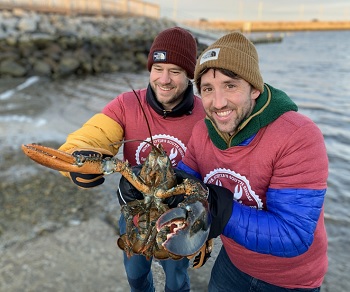
First Nova Scotia Lobster Day being ‘shell-abrated’
With the final Friday in February officially proclaimed Nova Scotia Lobster Day by the provincial government, it’ time to ‘shell-abrate,’ says the South Shore Tourism Cooperative.” We’re delighted to have the honour of observing the province’s first Nova Scotia Lobster Day on the final Friday in February. Nova Scotia Lobster Day not only celebrates the province’s lobster fishing heritage, culture and economic impact, but it does so during the height of the lobster fishing season. In honour of the first Nova Scotia Lobster Day, a reception will be held at the Lunenburg Academy on Feb. 28 from 6:30 to 8:30 p.m. Limited tickets are available via http://bit.ly/lobsterreception. >click to read< 08:35:15
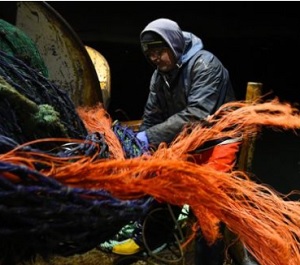
Battle lines being drawn over fishing rights
Fish have been served up among the main bones of contention between the UK government and the European Union. The negotiating mandate published on Thursday at Westminster is a long way from the vision for a future relationship for managing wild fish stocks in the European Commission’s proposals. That comes as no surprise to those who have seen the pre-negotiation posturing from the rhetoric of the 2016 Brexit campaign, to the priorities set out by Brussels along with the Withdrawal Agreement. >click to read< 23:13
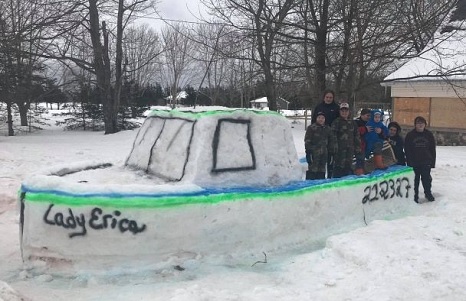
Tignish boys build snow boat sculpture to honour late great-grandfather
The boat mirrors the real lobster fishing boat captained by their great-grandfather Richard Hogan, who died in June 2018. Like its real-life counterpart, the snow sculpture also bears the name Lady Erica — named after the boys’ mother, Erica Perry. Perry says the boys, Bailey, Chase and Blaze, created the sculpture after school Tuesday, spending all afternoon and evening getting it done. How beautiful she is, boys! May his light shine upon you. >click to read< 19:08

Meet the super-plant from Nova Scotia’s shorelines: eelgrass
Eelgrass protects shorelines against storms, cycles nutrients and provides juvenile fish and lobster with places to hide and grow. If that’s not enough to convince people that eelgrass is a super plant, it is also many times more efficient at capturing and storing carbon than terrestrial forests.,,”If you lose eelgrass there’s nothing to replace it,” says Heike Lotze, a researcher and professor at Dalhousie University,, While protections for eelgrass can be put in place, Lotze points to a lack of understanding and recognition that what happens on land directly affects the ocean. Eelgrass is extremely sensitive to runoff (water carrying sediments and or chemicals) from land due to human activities such as development and agriculture (wastewater treatment plants). >click to read< 17:56
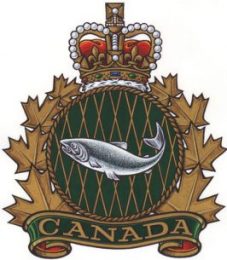
DFO: Season-long fishing closures possible under new North Atlantic right whale protections
On Thursday, the Department of Fisheries and Oceans announced more protections in an effort to prevent future entanglements. “These new measures build on that work, and are informed by the latest research and technology,” said Federal Fisheries Minister Bernadette Jordan in a release.,, This year, from April to November, Fisheries and Oceans Canada will be closing fishing in areas of the gulf where whales are gathering in large numbers. If whales are detected in an area of the gulf more than once during a 15-day period, that fishing zone will be closed for fishing until the end of the season on Nov.15. Previously, the zone would be re-opened after 15 days. >click to read< 15:58

Traditional boat builders join forces for interactive series
In towns like Gloucester, Salem and Newburyport, boats were traditionally built near the water, where locals could watch as their hulls took shape. It is a practice that Harold Burnham revived when he started building wooden boats in Essex in the early 1990s, so members of the community could follow each ship through the slow-developing drama of its creation. He has built five ships near the water, including the 65-foot Thomas E. Lannon, which was based on a traditional Gloucester fishing schooner and was launched in 1997. This Saturday, Essex Heritage will launch a series of talks and demonstrations on wooden boat building, rather than a physical ship, but the aim is the same as Burnham’s. 9 photos, >click to read< 15:02
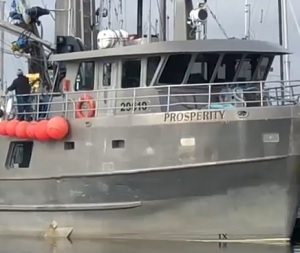
Vancouver Island: Controversy grows as herring fishery approaches
Anticipation is growing in French Creek’s harbour as herring boats began to fill it Wednesday ahead of the fishery opening. The opening could be any day. Fisheries and Oceans test boats have already recorded herring returning to spawn. “Could be any minute now, you know Mother Nature is temperamental,” said Captain of the Pender Isle Jason Roberts. Video, >click tp read< 12:32

Managing A Lucrative Resource In The Face Of Climate Change
Conservationists and commercial fishing industry leaders came together on the need to restructure the Magnuson-Stevens Fishery Conservation and Management Act to adequately consider climate impacts during a panel discussion in Honolulu. But that was about it for the common ground they found during the last stop on U.S. Rep. Jared Huffman’s nationwide “listening tour” on reforming the MSA. The panelists, which also included state and federal officials, had diverging views on the effectiveness of marine national monuments like Papahanaumokuakea and whether the eight regional councils that the law set up to manage fishery resources nationally should have designated seats to ensure representation from environmental, indigenous and scientific interests as well as the commercial fishing industry. >click to read< 10:38
What ever happened to HR-200? I have no interest in these people reauthorizing anything.
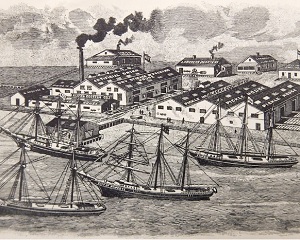
‘Codfish Fever’ – Hungry Gold Miners Craved the Salted Fish, so a Ragtag Fleet Set Off for Alaska
Codfish fever got its start in the years following the discovery of gold in central California in 1848, when San Francisco grew quickly from a sleepy hamlet into a thriving commercial center. Many of those who migrated to California during the Gold Rush were from western Europe. For them, salted cod was a dietary staple.,, Initially, East Coast merchants supplied Californians with salted Atlantic cod shipped via the Isthmus of Panama or Cape Horn. But this was a long, expensive journey for the fish, and California entrepreneurs recognized an opportunity to replace Atlantic cod with Pacific cod. It was one Captain Mathew Turner, an opportunistic merchant, who pioneered the U.S. Pacific cod fishery. >click to read< 08:43
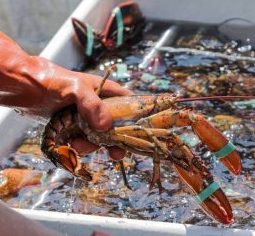
Coronavirus: Flights of live lobster to China plummeted in late January. When will they resume?
“It’ll probably be three or four months at least,” Keith Colwell told reporters after announcing $2.5 million in funding for a lobster quality research and innovation centre at Université Sainte-Anne in Church Point, N.S. “It’s a concern for us. It’s a serious concern, not just with lobster, but everything we export there.” Initially, Colwell called it a blip.,, “I think this is a big deal, particularly the way they’ve dealt with it, like they’ve closed stuff down,” said Chandra Gavin, a commercial fisherman from the Gulf of St. Lawrence. “We went through SARS and I don’t think any of that, none of this happened for that.” Video, >click to read< 07:47
Lobster Quality Research and Innovation Centre To Help Fishery – >click to read<
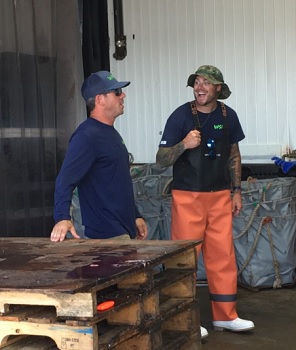
Maine Fishermen Zack Plante and Charlie Boivin, are on the new season of ‘Wicked Tuna’ along with Bob Cook of Beverly, Ma!
Zack Plante and Charlie Boivin will be featured on the ninth season of National Geographic’s reality TV show “Wicked Tuna,” beginning Sunday. They’ll be seen fishing out of their 35-foot boat, Wasabi. The point of the show is to see which crew hauls in the most bluefin tuna by season’s end, while highlighting the competitiveness and drama on the high seas along the way. Boivin and Plante are among three new crews on the show this season, competing against several other boats that have been on the show before. As the only boat from Maine, Boivin and Plante – the latter of whom a news release described as “ready to stir the pot” – went into the show with a little bit of a chip on their shoulders. >click to read< 20:10
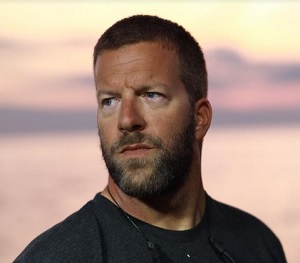 Beverly’s Bob Cook joins ‘Wicked Tuna’ – Beverly native Bob Cook has joined the cast and will make his debut aboard the Fat Tuna when the series’ ninth season gets underway this Sunday. For Cook, appearing on “Wicked Tuna” has been nearly a decade in the making. >click to read<2/28, 11:18
Beverly’s Bob Cook joins ‘Wicked Tuna’ – Beverly native Bob Cook has joined the cast and will make his debut aboard the Fat Tuna when the series’ ninth season gets underway this Sunday. For Cook, appearing on “Wicked Tuna” has been nearly a decade in the making. >click to read<2/28, 11:18
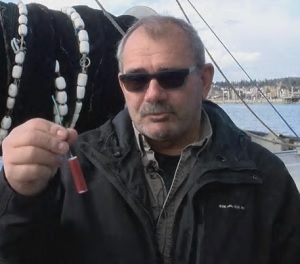
B.C. Herring fisherman charged with tossing a ‘bear banger’ to disperse group of sea lions last year
Herring fisherman Allen Marsden is facing three counts under the Fisheries Act and Explosives Act for tossing a small, explosive device known as a “bear banger” from his boat toward the crowd of animals on March 4, 2019. Fishers and Oceans Canada (DFO) confirmed the charges Wednesday but declined to comment further.,,, “We’re not out there trying to kill the sea lions. We’re not out there looking for sea lions. We’d rather if they weren’t here,” said Marsden. Marsden added the explosive was needed to ensure the safety of fishermen. He said he’d personally been bitten in the past. Video, (I cheered!) >click to read< 17:50
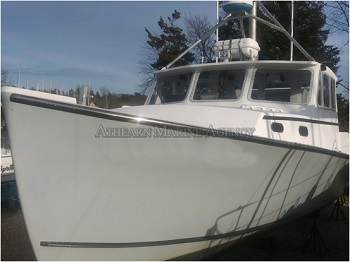
Athearn Marine Agency Boat of the Week: 42′ Bruno Lobster/Gillnet/Tuna (solid fiberglass hull)
To see specifications, information and 25 photos >click here< To see all the boats in this series, >click here< 15:09
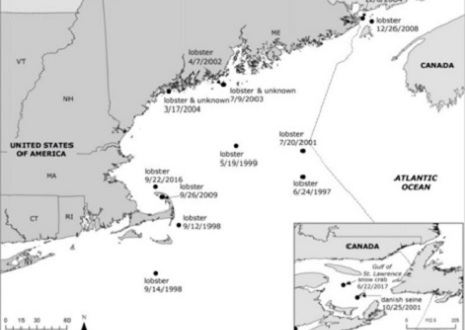
North Atlantic Right Whale: How to kill a species with Fake News, from National Geographic of all places!
“Fishing without vertical lines is what is going to save this species.“ says CT Harry of the IFAW who work hand in hand with NOAA. A ridiculous statement in view of the 18 cruise ship strikes in the Gulf of St. Lawrence (GSL) in the past few years, in all of NE over 20 years. ¼ whale per year by the lobster industry. Eighteen ship strikes in the GSL over the past 3 years averages 6 per year. These people are killing 24 whales while those people kill one. by Jim O’Connell >click to read< 13:22
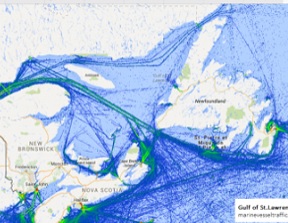 Most likely Carnival Cruise Lines is responsible for 18+ Right Whale deaths in the past 3 year, at which rate they would soon be extinct. – Human caused Right whale deaths have suddenly, in sync with a plummeting whale birthrate, put the right whale on the path to extinction. Why their birth rate, births per year, declined since a tremendous surge in 2000-2009 from 350 to 500 is unknown. In 2018 it hit bottom as no calves were born. >click to read<
Most likely Carnival Cruise Lines is responsible for 18+ Right Whale deaths in the past 3 year, at which rate they would soon be extinct. – Human caused Right whale deaths have suddenly, in sync with a plummeting whale birthrate, put the right whale on the path to extinction. Why their birth rate, births per year, declined since a tremendous surge in 2000-2009 from 350 to 500 is unknown. In 2018 it hit bottom as no calves were born. >click to read<

Scientists weigh in on whale risk tool!
The word is out, almost, on what a panel of independent scientists thinks about the controversial “decision support tool” used by NOAA’s National Marine Fisheries Service last spring when it drafted proposed rules aimed at protecting endangered North Atlantic right whales and other large marine mammals from entanglement with fishing gear. When the fisheries service made its decision last spring on how best to reduce the risk to whales, it relied on a “decision support tool” based on a poll of Atlantic Large Whale Take Reduction Team (TRT) members, rather than extensive data collected over the years, as to where the whales are found and how much interaction there has been between them and Maine lobster gear. >click to read< 11:31
Decision Support Tool Helpful to Those Finding Ways to Reduce Whale Entanglement in Fishing Gear – From NOAA! >click to read<


































